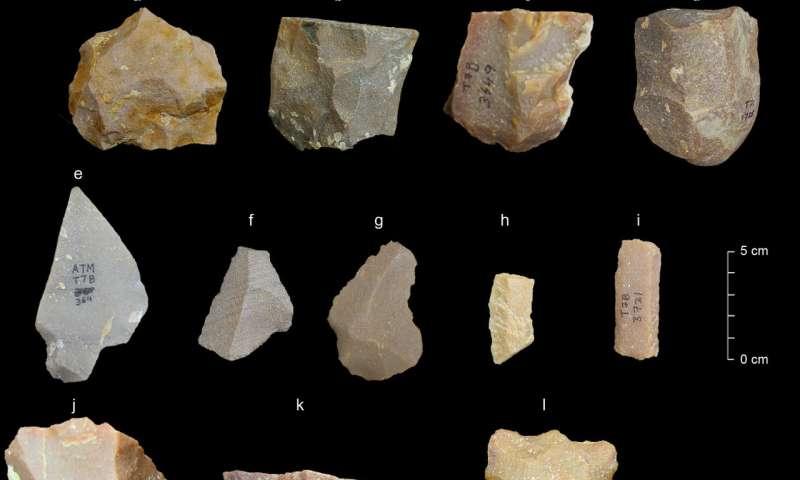Who Made These Advanced Stone Tools in India?

Credits: Sharma Centre for Heritage Education
A new study of ancient stone tools discovered in Attirampakkam, a village about 60km from Chennai, makes interesting revelations about human history. It points to the fact that modern stone tools developed in India much earlier than previously thought. However, it is still contested if this development emerged from ancient human populations in India or migrations of modern humans from Africa.
These stone tools have been dated to be around 385,000 years old, and the style of these tools is associated with Middle Palaeolithic (MP) culture. Prior to this discovery, development of MP tools in India had been dated to as late as 140,000 to 90,000 years ago.
It has till now been theorised that MP tools first developed in African human populations. In India, humans transitioned from primitive Acheulian tools to more advanced Middle Palaeolithic ones when Homo sapiens migrated from Africa and came to South Asia.
Researchers at Sharma Centre for Heritage Education in India have published their study in Nature on their findings. Their paper says that emergence of such tools earlier in the day could mean that either we need to re-evaluate when humans exited Africa, or re-evaluate the dependency of the development of MP tools on human migrations.
Michael Petraglia, Professor at the Max Planck Institute for the Science of Human History, believes that it is more likely the MP tools were developed by archaic Indian humans. “My view is that the Attirampakkam evidence reflects a regional continuity between the Acheulean and the Middle Palaeolithic, most likely by archaic humans that were already present in India. This would be represented by early humans such as found in the Narmada river valley in India, which was a large brained human, probably living at about the same period of time represented at Attirampakkam,” he told Newsclick in an email.
Shanti Pappu, the corresponding author of the study, said that the view of the authors do not vary much from Professor Petraglia’s. No human fossils were discovered along with these tools making it very difficult to conclude how these tools developed.
“We have clearly stated in our paper that conclusive correlations between the Middle Palaeolithic assemblages at Attirampakkam and a specific hominin species—whether modern humans or archaic hominins—cannot be established because India currently lacks fossil or genetic evidence for this time period other than the Narmada fossil cranium,” she told Newsclick.
The study does show that cultural changes were taking place in India earlier than previously thought. “We merely state that we identify a cultural change, based not just on "index-fossils" (specific tool types) alone, but looking at the complete assemblage over a very long stratified sequence, much earlier than presumed. This certainly challenges theories that this culture reached India far later in time,” Shanti said.
If these developments were not due to earlier migrations of modern humans into South Asia, then this could indicate a longer survival period of archaic indigenous humans in India.
Get the latest reports & analysis with people's perspective on Protests, movements & deep analytical videos, discussions of the current affairs in your Telegram app. Subscribe to NewsClick's Telegram channel & get Real-Time updates on stories, as they get published on our website.
























